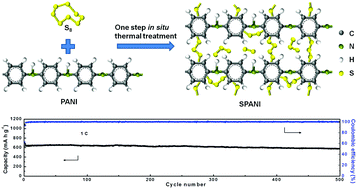An in situ chemically and physically confined sulfur–polymer composite for lithium–sulfur batteries with carbonate-based electrolytes†
Abstract
An in situ chemically and physically confined sulfur–polymer composite (denoted as SPANI) is synthesized by sulfurizing PANI through a one-step thermal treatment. The SPANI cathode exhibits excellent cycling stability in commercial carbonate-based electrolytes. It offers a new insight into sulfur cathode design for high performance Li–S batteries.



 Please wait while we load your content...
Please wait while we load your content...